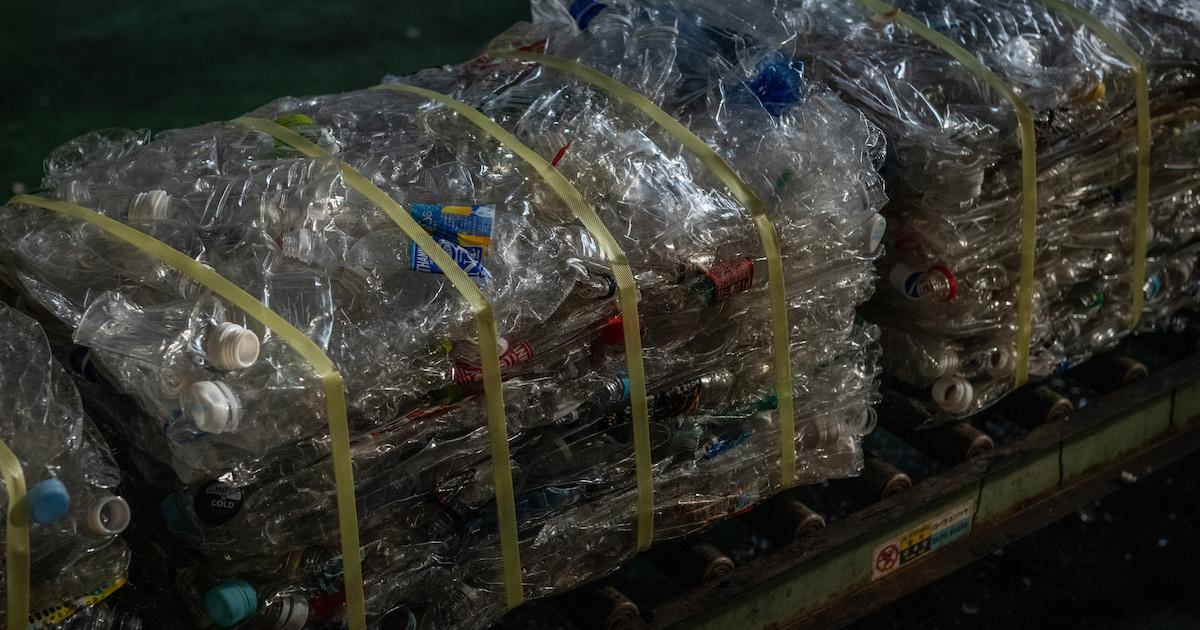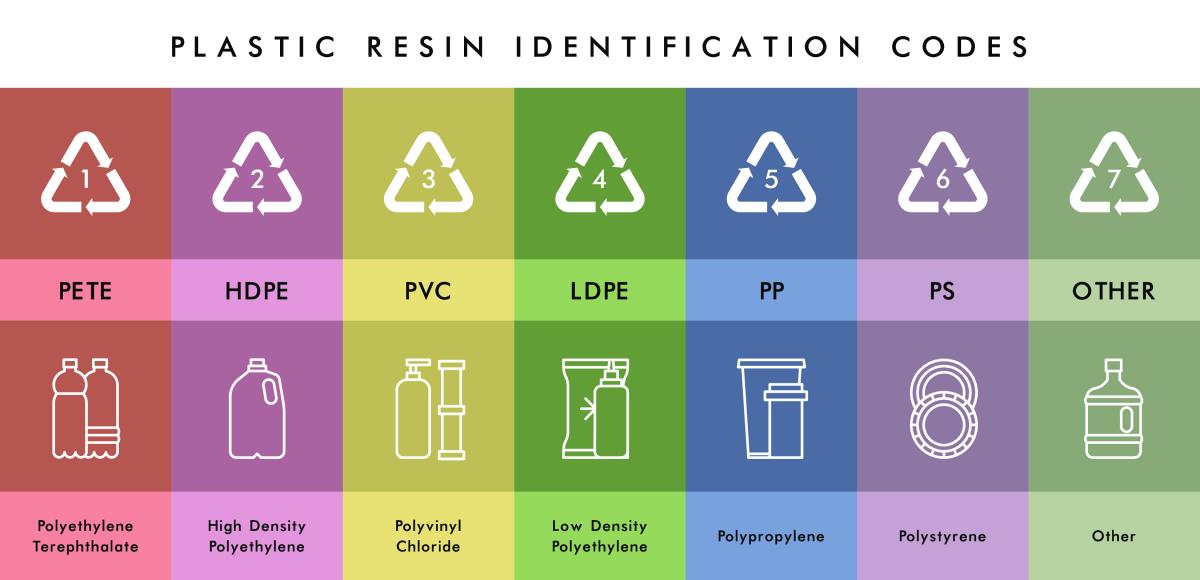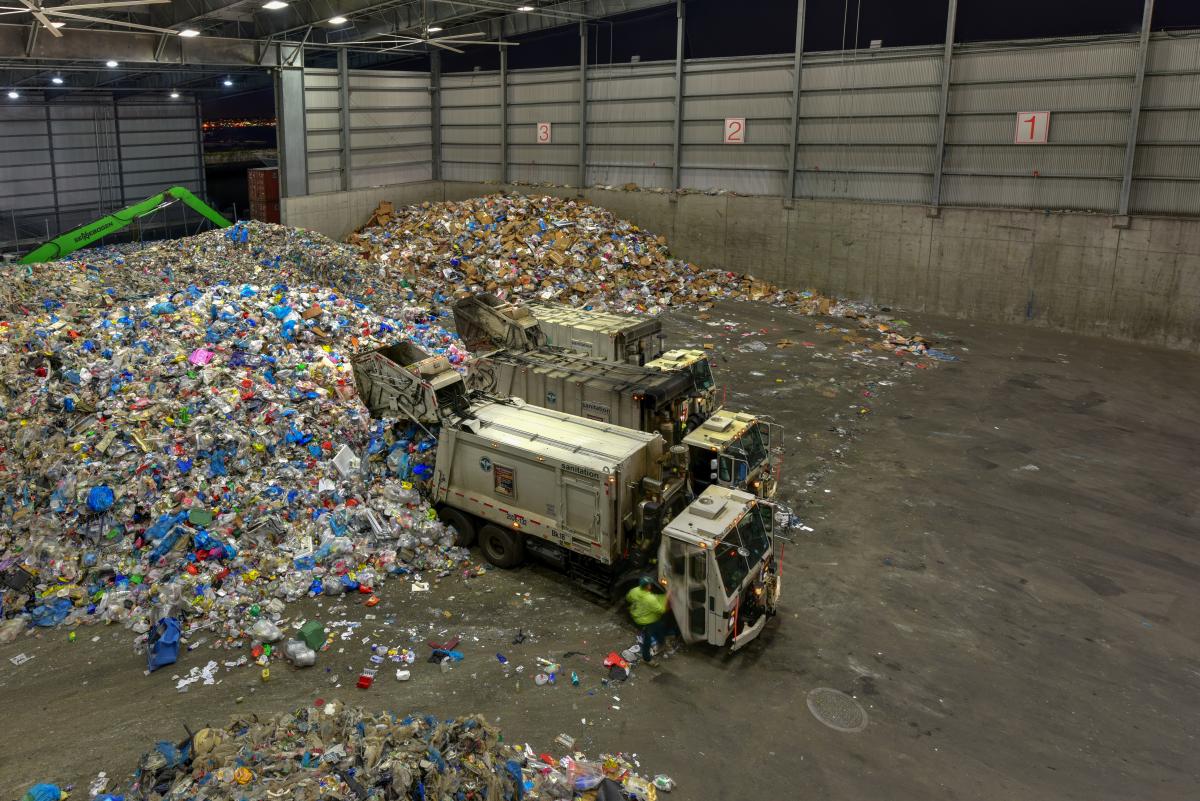Myth: All plastic is recyclable.
When people think of plastic, we usually think that all plastic can be recycled because we constantly see advertisements about how certain projects are made by reused plastics. Since plastic is used for almost everything we use, we think that all of this plastic must be recyclable because there’s so much of it, when in reality, the amount is more surprising than you would think.

Fact: Only about 9% is recycled.
In America, only about 35% of all waste is either recycled or composted. Looking at plastic alone, only about 9% is actually recycled. This 9% that does get recycled often is down-cycled instead which causes this plastic to get more and more useless over time and harder to get rid of. The other 91% of plastic that does not get recycled gets put into landfills where the plastic sits and breaks down into dangerous microplastics. National Geographic reported that by the year 2050, the landfills around the world will be holding about 12 billion metric tons of plastic. This is equivalent to 35,000 times heavier than the Empire State Building.
This massive amount of plastics build up which results in climate change. A major problem when climate change is that people find it difficult to talk about for multiple reasons. Authors Joanna Macy and Chris Johnstone, asked a group of people to finish the sentence, ““When I consider the condition of the world, I think things are getting…”. Most people said answers like “frightening” or “dangerous” and even “out of control”. Plastic pollution is causing people to fear for our futures and big corporations try to convince us that there isn’t a problem, when in reality, there is. This is why we need to make it know how much of waste is not being recycled because if we keep continuing to ignore it, the more harm to our planet is going to occur and we may not be able to reverse it.
Myth: Anything with the recycling symbol is recyclable.
When people see the three arrows chasing each other in a triangular loop, we think that this product is going to be recycled. We have all been taught that this symbol simply means it will be recycled once it is thrown away. However, the number in the triangle provides a clear answer on whether or not the product is truly being recycled.

Fact: The number inside of the triangular loop matters.
Ever since this symbol has been placed on products, the world has been misled to think all products with this triangular symbol can and will be recycled. Each recycling symbol has a number in it which correlates with a different category of plastic and allows facilities to know which type of resin can be found in the product. The numbers range from 1-7 and typically, the only plastics being recycled are No. 1 and No. 2 plastics which consist of soda and water bottles, and milk, juice, and detergent jugs. These types of plastic have resins that are high in demand and are able to be recycled properly. As for plastics in the category of 3-7, they are less valuable and are ultimately turned into garbage. Since only No. 1 and No. 2 plastics are truly recyclable, some states and cities have even changed what their residents should and should not put into recycling. This allows facilities to be able to collect the plastic that can be recycled and not have the other categories of plastics get mixed in.
The major problem with this misconception of recycling labels is that the media does not properly capture the plastic crisis and the harm that is coming from it. This misunderstanding of the symbol has been around since the 1980s and over 40 years has passed and we still are under the assumption that this symbol guarantees recycling. Companies like Coca-Cola try to advertise their 100% recyclable bottles when they are currently the #1 polluters. This makes people believe that since it has this symbol and they advertise its recyclability, it doesn’t harm our planet and other products with this symbol is 100% recyclable too. This causes this misconception of the symbol to still be believed after 4 decades.
Myth: We are already recycling as much as we can.
People assume that we are already doing as much as we can. Recycling bins are placed everywhere with pictures of what should and shouldn’t be recycled and a lot of companies claim to now be using less plastic or even more recyclable plastic. The truth is that our world has produced so much plastic and other non-recyclable products that have no place to go. All of these extra items get placed in landfills that just keep growing over time.

Fact: The national recycling rate is about 30%.
Although we have systems in place to help with recycling, this does not mean that we are doing as much as we can. A lot of people do not participate in actively trying to recycle which can not be controlled for. The National Recycling Coalition has found that 78% of glass containers, 60% of aluminum cans, 41% of steel cans, 45% of paper and paperboard containers and packaging are not currently recycled which plays a huge part in only a 30% recycling rate. An issue with how people recycle in their home is that people typically only participate in recycling in the kitchen. Places like the bathroom, bedrooms, laundry rooms, etc., do not get accounted for when considering when to recycle. People are also constantly on the move and providing more places to recycle things would be beneficial to everyone. This includes more recycling bins in public places like park, event places, and even on the streets for when people happen to buy something that could be recycled. Everyplace that has a trash can should have a recycling bin as well because what they may need to throw out could potentially be recycled instead.
A lot of the plastic that is not truly getting recycled ends up getting transported to countries like Indonesia and other developing countries. This results in massive buildups of waste pollution and causes harm to the people living there. The documentary “The Story of Plastic” travels to these countries that get dumped with all of our plastic waste and talks about the problems that these people have encountered. Delhi, a city in India, has dropped their life expectancy rate to 15-20 years less just because of the plastic pollution in their city. It surrounds them constantly and since all that plastic is breaking down to dangerous microplastics, it is causing these people to reduce their life expectancy. This plastic pollution is not only directly harming developing countries, but also in the United States itself with fence-line communities. In Texas, they have the Houston Ship Channel and the children that live within 2 miles of it, have a 56% greater chance of getting leukemia than any other children. This plastic is not only consuming our lands but is causing major harm to our physical healths.
References:
http://www.wiu.edu/sustainability/recycling_myths.php
https://oceana.org/blog/recycling-myth-month-those-numbered-symbols-single-use-plastics-do-not-mean-you-can-recycle-me/
https://www.greenmatters.com/p/what-percent-recycling-actually-gets-recycled]
Macy, J., & Johnstone, C. (2022). Active hope: How to face the mess we’re in without going crazy. New World Library.
https://www.kanopy.com/en/umassd/watch/video/11828290
